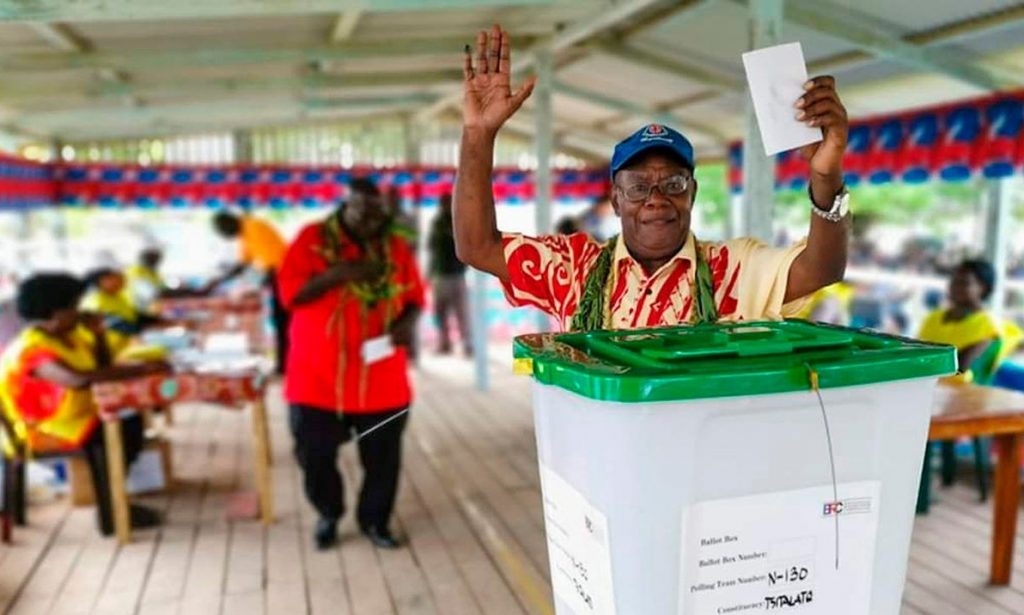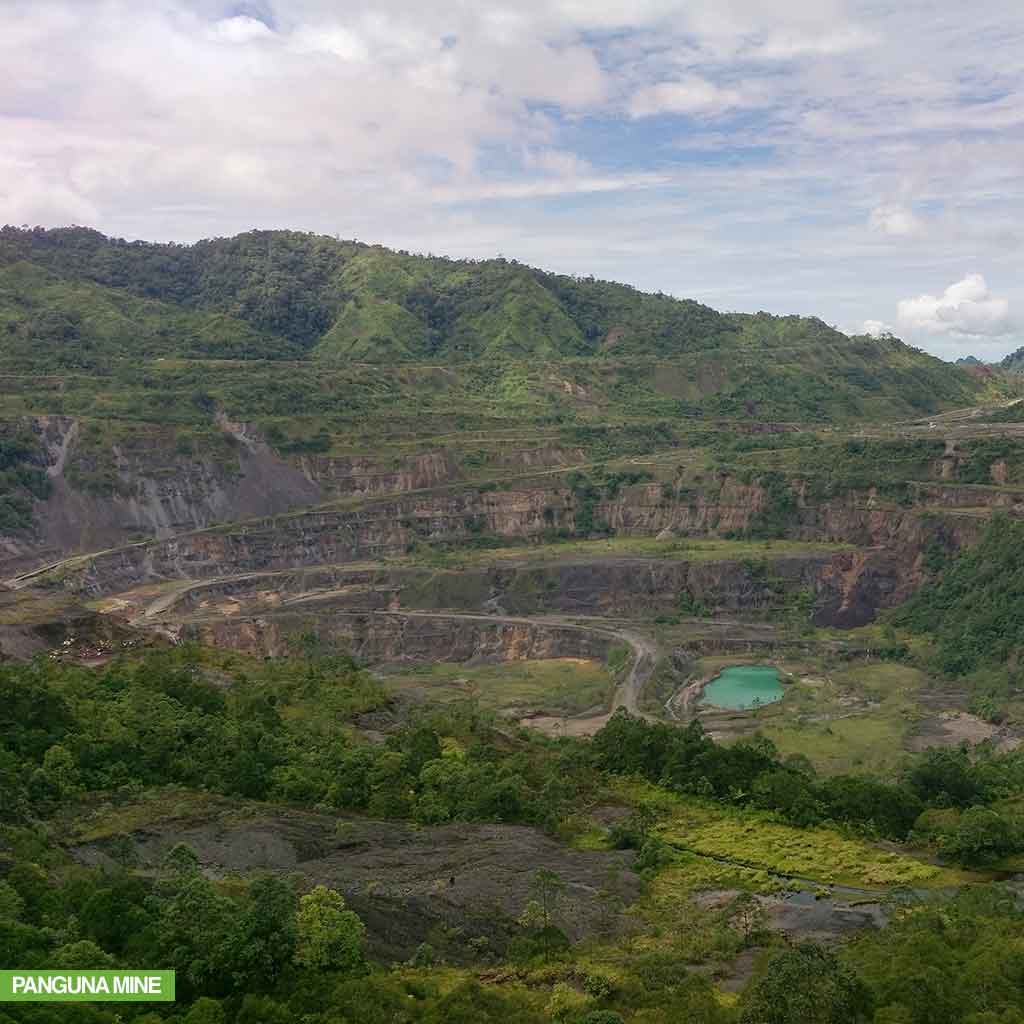By Kevin McQuillan
Landowners from the Panguna Mine area and the Autonomous Bougainville Government have reached a historic agreement to re-open the Panguna gold, copper and silver mine.
The joint resolution was signed by clan chiefs and representatives from the five major clans of the Panguna area – Basikang, Kurabang, Bakoringu, Barapang and Mantaa.
How significant is this? When will the mine start operating and who will do this? How does it fit into the plan for independence?
Kevin McQuillan reviews the possibilities.
The deal is significant for the people of Bougainville, the Autonomous Bougainville Government (ABG), the national government, and, given the size of the project, probably the South Pacific region. It also creates a huge dilemma for the national government: how does it deal with Bougainville’s demand for independence?
The mine began operating in 1972 and over the following 17 years – before it was closed due to a civil war – it produced about A$1.5 (US$1.07) billion worth of copper, gold and silver, about 22% of PNG’s exports over that period and 44% of the country’s GDP.
The ten-year civil war was sparked largely by the failure of the company’s owners, Rio Tinto, to adequately compensate local people with royalties, and for the environmental damage the open cast mine caused. Up until the closure of the mine, Bougainville Copper Limited (BCL) paid more than one billion dollars in tax and dividends to the PNG Government, A$33 million to landowners and another A$83 million in royalties to the provincial government. Exact figures are unknown, but it’s believed 20,000 people were killed during the war.
There has been mounting pressure over the last ten or more years for the mine to re-open because the younger generations want the opportunities that they know exist, but which Bougainville can’t provide. The ABG, led by then President John Momis sought agreement between landowners to re-open the mine. Those opposed saw the alternative riches of the island – fishing and tourism in particular – as the preferred alternatives, but the leadership regarded the income from the re-opening of the mine to be a far better long-term basis for an independent Bougainville.
A condition of the 2001 peace agreement was that a referendum on Bougainville’s political status, i.e., independence, would be held sometime between 2015 and 2020. It went ahead in late in 2019, with 97.7% favouring independence. The following year, new ABG President, Ishmael Toroama set out a timeline for independence by 2025.
Timeline
The front-runner to operate the mine would appear to be BCL, in a joint venture.
BCL currently holds the exploration licence for the mine, which ABG refused to extend in January 2018. A judicial review of that refusal was due to be heard in the first half of 2022, according to BCL general manager and secretary, Mark Hitchcock.
RTG Mining Inc and Callabus Mining, two Perth-based companies, have signalled they want to take over the licence and develop the mine. RTG claims to be the Landowner’s Developer of Choice and that under the Bougainville Mining Act (2015), the Special Mining Lease Osikaiyang Land Owners Association (SMLOLA) own the mineral rights at the old Panguna Mine. However, the SMLOLA is not an approved entity under the 2015 Mining Act. Callabus – set up in 2018 – claims Panguna Tangku’urang Chiefs have endorsed it as the preferred partner to re-open the mine. In 2013, Momis warned that Beijing Aerospace Great Wall Mineral Investment Ltd was attempting to get access to Panguna, via the backdoor.
After walking away from the project in 2016, rather than face the prospect of a massive clean-up bill, Rio Tinto has re-appeared on the scene. Its representative told the Panguna Mine Legacy Impact Assessment Oversight Committee, which was established last year after a complaint against Rio Tinto on behalf of residents alleging ongoing environmental and human rights issues linked to the Panguna mine: “Rio Tinto is sorry that we did not come forward earlier to understand the impacts from the mine”. His words were welcomed by Bougainvilleans.
In 2016, it gave its shareholding in BCL equally to the national government and to the ABG. Then Prime Minister, Peter O’Neill, promised to hand over its 36.4% shareholding to the ABG, but that has yet to happen.
Hitchcock says BCL owns the intellectual property over the mine – that is, the data covering the geology, engineering, environmental and community characteristics of the mine area.
BCL’s board are all Papua New Guineans, four are from Bougainville and five have mining backgrounds, including Peter Graham, former managing director of ExxonMobil PNG Limited and former CEO of Ok Tedi Mining Ltd.
The 2015 Bougainville Mining stipulates that 51% of the mine must be locally owned and that the people of Bougainville must receive 5% of a fully developed mine. The share value of BCL doubled this month, on news of the landowner agreement, but its assets are worth just $268m. Thus, a joint venture is the most likely, but there is likely to be a range of suitors, from Rio Tinto, Glencore through to Ok Tedi.
High risk, high return
As global demand for copper for use in electric vehicles, for example, increases, so does the value of the mine increases. The last publicly released figures from BCL, in 2012, estimated the cost of rehabilitating the mine to be about US$5 billion (K16.86 billion), with an anticipated income of about US$75 billion (K252 billion) over its 30-year life. Conservatively adding 50% to those figures, would see the rehabilitation costs at about US$8 billion, and income at about US$110 billion — eye-watering figures.
Hitchcock said in 2017 it would take eight to nine years for the mine to become operational.

Independence
The national government is in the dilemma of having agreed to discuss Bougainville breaking away, but not wanting to break away. What does it do to keep Bougainville within the fold, because the potential income for not just for Bougainville but for the country as a whole is enormous?
Officials and politicians see Panguna as a potentially significant contributor to the PNG economy. So where Prime Minister James Marape, or whoever takes over as prime minister if he loses the election this year, goes with discussions on Bougainville and its independence is hugely significant.
It’s not necessarily the binary choice of either independence or not. It could be that the negotiations see Bougainville stay within PNG but having a high degree of independence. But nobody’s really going to know until the negotiations finish.
In New Zealand, last year, Marape hinted it could be five years before the national parliament decides on Bougainville’s future.
It will be difficult for PNG to persuade the Bougainville leaders to accept anything short of full independence, just as it will be for the national government to accept Bougainville breaking away.
